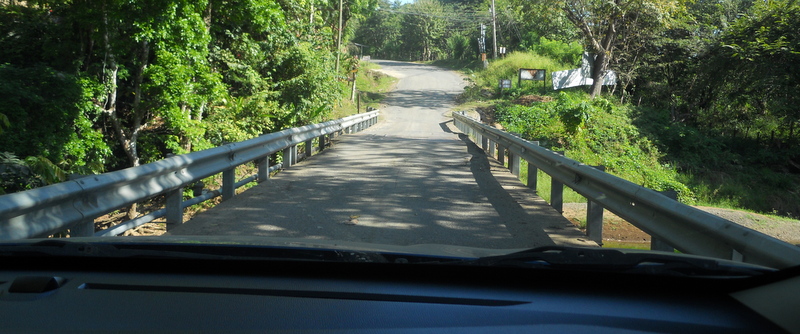In December of 2012, Sandi and I went to Costa Rica. It has taken a few years, but I'm finally taking the time to edit my journal entries, post the blogs, and upload the pictures. Click the pictures to expand them. Click here to jump to the beginning with a link to every day.
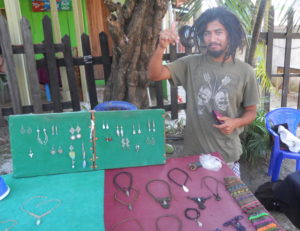 After breakfast I went to pick up Curti’s necklace. My dude wasn’t at his table yet, so I chatted with another vendor while waiting. He said he’d heard that all Americans have lots of money and wondered if it was true. I told him, no, it wasn’t. We had plenty of poverty in the USA. But I also told him that I felt like we, in general, had more than our fair share when compared to the rest of the world. I asked him how business had been the past few years, if they had felt the effects of our recession.
After breakfast I went to pick up Curti’s necklace. My dude wasn’t at his table yet, so I chatted with another vendor while waiting. He said he’d heard that all Americans have lots of money and wondered if it was true. I told him, no, it wasn’t. We had plenty of poverty in the USA. But I also told him that I felt like we, in general, had more than our fair share when compared to the rest of the world. I asked him how business had been the past few years, if they had felt the effects of our recession.
“Yes,” he said. “Things have been really slow the past few years. I hope it gets better in the US soon so they will get better for us.”
He had lived in different areas of the country to learn more about his trade as a jeweler. I had taken his creations for granted. I didn’t realize how serious these artists took their trade. He’s maxed out what he felt could be learned in this area and was moving on to find somebody who could teach him some new tricks.
 Today was a travel day: to meet my brother and his wife—Ryan and Yeimy—at her parent’s house in Naranjo (about an hour north of San Jose). We left Montezuma on the same twisty road we’d drove in and stopped in Paquera. I wasn’t sure how ferries worked in Costa Rica and imagined it would involve long lines and many dollars. The language barrier also worried me. What if we ended up going in the wrong direction? Like usual, mind made things much worse than reality. It was a simple transaction to get our ticket, and we sat at a picnic table and enjoyed a few snacks with the gorgeous view while we waited.
Today was a travel day: to meet my brother and his wife—Ryan and Yeimy—at her parent’s house in Naranjo (about an hour north of San Jose). We left Montezuma on the same twisty road we’d drove in and stopped in Paquera. I wasn’t sure how ferries worked in Costa Rica and imagined it would involve long lines and many dollars. The language barrier also worried me. What if we ended up going in the wrong direction? Like usual, mind made things much worse than reality. It was a simple transaction to get our ticket, and we sat at a picnic table and enjoyed a few snacks with the gorgeous view while we waited.
 The ferry saved us hours of driving. Once across, I was determined to hit the faster highway to San Jose this time, but it wasn’t on my GPS and finding it was tricky. We took needless detours trying to cut through to the side of the mountain where we’d meet my brother and his wife, and ended up stuck again behind lines of cars winding up and down steep hills at ten miles per hour. Our ninety-mile drive took half of the day.
The ferry saved us hours of driving. Once across, I was determined to hit the faster highway to San Jose this time, but it wasn’t on my GPS and finding it was tricky. We took needless detours trying to cut through to the side of the mountain where we’d meet my brother and his wife, and ended up stuck again behind lines of cars winding up and down steep hills at ten miles per hour. Our ninety-mile drive took half of the day.
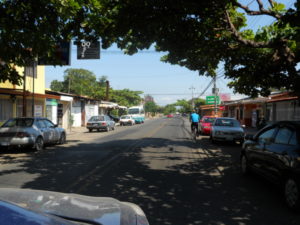 In Naranjo, I couldn’t figure out which house was theirs. We parked and I walked up to an open, roadside snack shop to ask a woman for help—my brother later told me this was called a pulperia. Once we had established that neither of us could understand one another, I pointed to a piece of paper with Yeimy’s name and address. The woman got real excited and pointed, motioning for us to go around the corner. I walked to the corner but still couldn’t tell, so I just started yelling my brother’s name as I walked down the street.
In Naranjo, I couldn’t figure out which house was theirs. We parked and I walked up to an open, roadside snack shop to ask a woman for help—my brother later told me this was called a pulperia. Once we had established that neither of us could understand one another, I pointed to a piece of paper with Yeimy’s name and address. The woman got real excited and pointed, motioning for us to go around the corner. I walked to the corner but still couldn’t tell, so I just started yelling my brother’s name as I walked down the street.
“Ryan! Hey, Ryan!”
Ryan came running out of a house and yelled, “Shut up, War! You’re going to get us all killed!”
No, he didn’t say that. He opened the front gate and let us in.
Yeimy’s mom, Deyanira, welcomed us like we were family. She met us with open arms and said, “Mi casa es tu casa.” Then she fed us. I felt like I’d left a foreign country and found home. It was such a peaceful feeling, I almost regretted our plans to wake early the next morning to leave again.
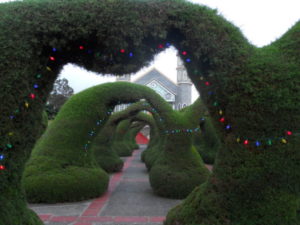 Ry took us to see Yeimy’s family business, a giant food distribution company, then we all drove up the mountain to see the elaborate gardens in Zarcero. We spent more time than expected up the mountain and shopping for snacks at a market—it was dark when we returned to the house to pack for our Corcovado excursion. Tomorrow Ry and Yeimy were joining us on a three-day backpacking trip through the jungle, and we had to prepare.
Ry took us to see Yeimy’s family business, a giant food distribution company, then we all drove up the mountain to see the elaborate gardens in Zarcero. We spent more time than expected up the mountain and shopping for snacks at a market—it was dark when we returned to the house to pack for our Corcovado excursion. Tomorrow Ry and Yeimy were joining us on a three-day backpacking trip through the jungle, and we had to prepare.
The Corcovado National Park is located on the southwestern tip of Costa Rica. National Geographic described it as the most bio-diverse place on the plate— 164 square miles packed with plants, wildlife, and insects. The only way to explore is on foot—no roads. We’d journey with a guide, Nito, and a couple from Spain. From the south of the park, we’d hike to the Sirena ranger station for two nights and then back out.
“How far is the hike each way?” Sandi, Ry, and Yeimy had asked before ever agreeing to the trip.
“Ten, maybe even nine … eight. Somewhere around there.” It depended on where we started and the route we took, and the reports I’d read varied
We were supposed to meet Nito tomorrow in Puerto Jimenez, 226 miles away. Up until today, I’d expected the drive to take a half a day. Now, after driving in Costa Rica, I was worried we’d be able to make it in a single day. To be safe, we decided to leave at five in the morning.
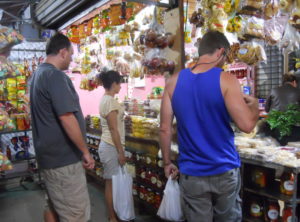 It took several hours to pack, and we were up late. Ry and I had several cameras and lenses, and by the time our packs were loaded with camping and photography gear, they were heavy. My GoPro, Canon 1D, 100-400mm lens, other lenses, batteries, and camcorder weighed twenty-six pounds. In addition, I had my camping gear. My pack was heavy. But I couldn’t trek into the most biodiverse place on the planet without being prepared. Getting the right picture was a small price to pay for a hefty pack.
It took several hours to pack, and we were up late. Ry and I had several cameras and lenses, and by the time our packs were loaded with camping and photography gear, they were heavy. My GoPro, Canon 1D, 100-400mm lens, other lenses, batteries, and camcorder weighed twenty-six pounds. In addition, I had my camping gear. My pack was heavy. But I couldn’t trek into the most biodiverse place on the planet without being prepared. Getting the right picture was a small price to pay for a hefty pack.
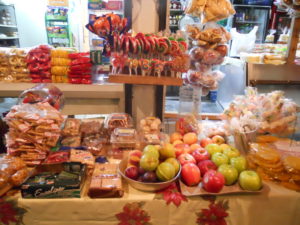 We got to bed late, then I couldn’t sleep. Too many worries. I wasn’t sure if we could drive our vehicle on the dirt road from Puerto Jimenez to Carate, where our hike would start. Neither Ry nor Yeimy had ever been to that part of the country, so they weren’t sure what to expect either. I’d heard several rivers had to be forged and sometimes cars got stuck in the middle. My biggest worry was that getting stuck in a river was not covered by our car insurance. Sandi’s biggest worry was getting stuck in a river. On top of all of that, I was nervous and excited about a three-day backpacking trip through the jungle. My confidence wavered, but I kept up a steady face with the others. I’d put this trip together. Arranged the details. If I had shaky knees, there was a good chance they’d all decide it was too risky.
We got to bed late, then I couldn’t sleep. Too many worries. I wasn’t sure if we could drive our vehicle on the dirt road from Puerto Jimenez to Carate, where our hike would start. Neither Ry nor Yeimy had ever been to that part of the country, so they weren’t sure what to expect either. I’d heard several rivers had to be forged and sometimes cars got stuck in the middle. My biggest worry was that getting stuck in a river was not covered by our car insurance. Sandi’s biggest worry was getting stuck in a river. On top of all of that, I was nervous and excited about a three-day backpacking trip through the jungle. My confidence wavered, but I kept up a steady face with the others. I’d put this trip together. Arranged the details. If I had shaky knees, there was a good chance they’d all decide it was too risky.
Inside, I wondered if maybe it was.
(Note: Google map routes may not be exact.)
Thanks for reading about my travels. To read more of my adventures, click here to visit my travel page.
